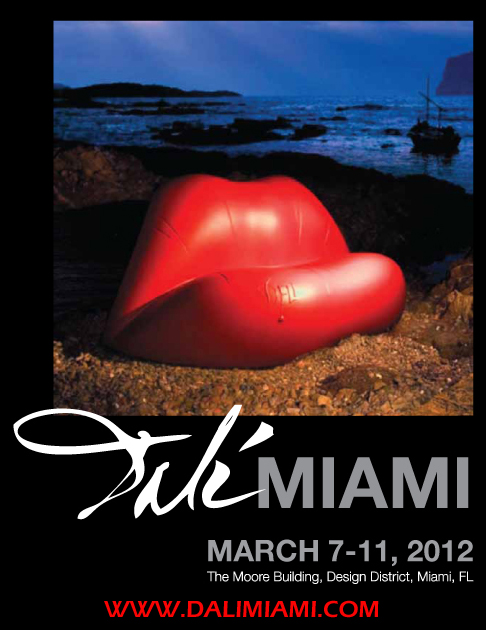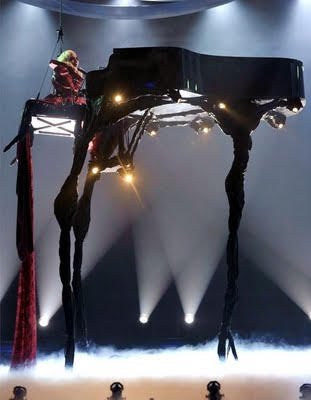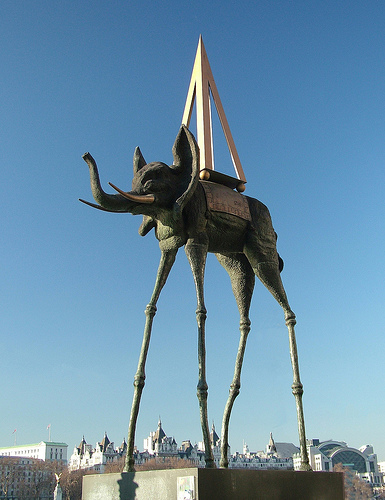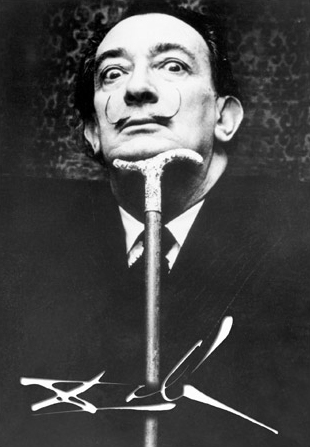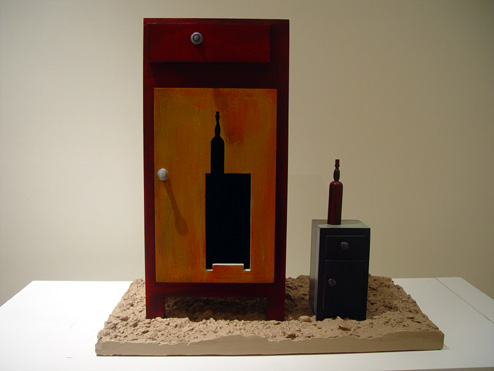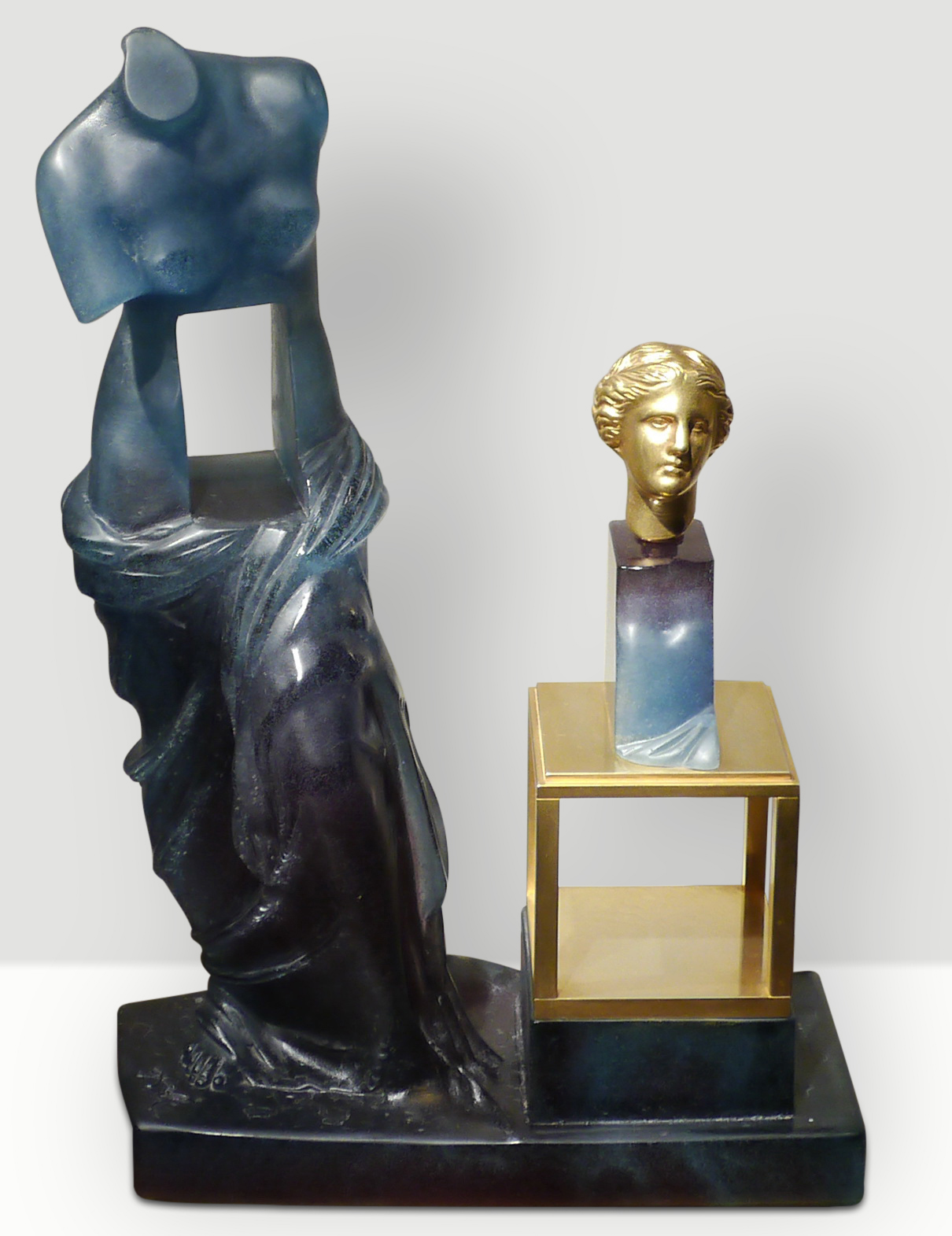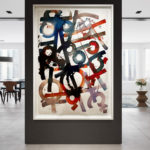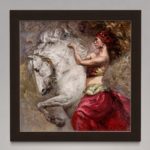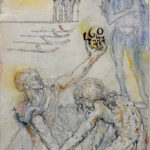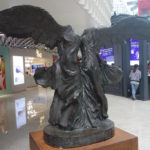By Reed V. Horth of Robin Rile Fine Art for Dali Miami 2012.
If you ask ten people on the street to name any artist, the number one name would probably be Pablo Picasso. Running a close second in name-recognition would probably be his fellow Spaniard Salvador Dali. Few people, if any, have transcended more media, genres and decades as the late Spanish Master Dali. His influence has profoundly affected how we go about creating and perceiving art, but also architecture, literature, television and movies, fashion, advertising, branding and marketing, luxury, motivation and public personas and virtually every aspect of modern life.
After all, where would Lady Gaga be if not for Dali?
Salvador Dali is also one of the more quotable souls who walked the 20th Century. “I don’t do drugs. I am drugs” and “I have Dalinian thought: the one thing the world will never have enough of is the outrageous,” are merely two of the myriad sentiments that have echoed through the annals of art history and popular culture since he gave us permission to share in his vision of the world. Dali is often misunderstood. He is often overlooked as a gauche and eccentric busy-body whose over-the-top dramaticism was simply showmanship masquerading as art. However, the depth of Dali’s psyche and inexhaustible energy, his thirst for knowledge and unquenchable appetite for life, stand in loud contrast to our lives of quiet desperation. He is the energy we wish for ourselves. He is the out-of-the-box thinker that challenges us and makes us consider no subject taboo. He is the bull dancing through the China shop with the dexterity of a ballerina and the precision of a high-wire walker. He makes the impossible seem, sometimes awkwardly, possible. He was all that seemed limitless in the world. Further, he developed what it meant to be “artistic” decades before Warhol co-opted it for himself.
“Surrealism” is not a painting style like “impressionism”, “expressionism” or “art deco”. This is why you will see such a broad spectrum of diverse media, styles and levels of detail in the works you see here. “Surrealism” instead, is a method of thought first enumerated to Dali by the poet Andre Breton in the dusty halls of “El Quatre Gats”, a small pub in the Gothic Quarter of Barcelona. Breton’s manifesto and impassioned inspiration enticed a group of impressionable artists, poets and thinkers to challenge convention in ways that had never been done. Dali took “Surrealism” and applied it to his art school teachings, developing not, “Surrealistic” painting per se, but what we have come to think of as the quintessential visualization of what it meant to be “Surreal”. The melted clocks, the crutches, the ants and visions of Millet’s Angelus, all juxtaposed with rocky and desolate images of his youth in Eastern Spain. “Instead of stubbornly attempting to use surrealism for purposes of subversion,” he notes. “It is necessary to try to make of surrealism something as solid, complete and classic as the works of museums.” His symbols and double entendres are left for scholars to debate meanings of like the sonnets of Shakespeare or the prophesies of Nostradamus. However, the undeniable beauty and virtuosity in varied media provided us with a prodigious catalogue for which to develop our thoughts about what “Surreal” looked like and how it made us feel. The enigmatic and disturbing 1929 collaboration with director Luis Buñuel, entitled “Un Chien Andalou (The Andalusian Dog)” is as quintessential a vision of what it meant to be “Surreal” as any of his two dimensional works could have been. “Painting is an infinitely minute part of my personality”, Dali is quoted as saying. Further, the film underscores Dali’s idea of collaboration with other like-minded collaborators in varied media, a method which transcended his career and spanned the gamut of talents from Walt Disney to his wife and muse Gala, to his varied publishers, secretaries and archivists, sculptors, poets, artists and media personalities.
Dali’s three dimensional creations present a tangible and physical weight not possible with a graphic or painting. Too often I have heard, “I did not know Dali did sculpture”. In fact, Dali completed hundreds of sculptures throughout his long career, some with complex themes and fantastic manual dexterity, others which resemble glorified ashtrays. Many of his early attempts were forced juxtapositions of found objects in fantastical combinations much like his fellow-Surrealist Marcel Duchamps.
As his vision matured, his sculptural works became more refined and complete visions of “Surreal” thought. His quintessential “Cabinet Anthropomorphic” instills in the viewer a veneration for all things historical, but also introduces the Freudian drawers of the psyche, a theme you will see echoed across the spectrum of his painted, printed and sculptural oeuvre. Robert Descharnes, a friend and secretary for Dali, iterated a story to me of Dali sitting by his pool in Eastern Spain overlooking the beaches below and absently modeling figurines from wax. The nude Dali would peer out over the water and unconsciously turn the wax brusquely over in his hands until they emerged as subconscious visions of his daily experience. An anchor as a sea god. Don Quixote seated in mute protest. A dancing woman gaily flirting with his charges. A dragon, swan and an elephant intermingled in a tri-cornered morass of golden bronze and glistening light. Sipping his muscatel, Dali would beckon Descharnes to summon a beauty lounging in the sands below, “Tell her that she must meet DALI”. Inspired by what he saw, felt and dreamed, he absorbed the world and spat it back for us to figure out… or not.
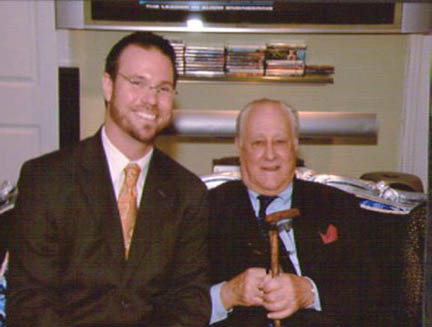 The author Reed V. Horth with Mr. Robert Descharnes, 2007
The author Reed V. Horth with Mr. Robert Descharnes, 2007
A bodybuilder goes to sleep at night thinking of nothing but his next workout. Tossing and turning during the night, the muscles remain taut with anticipation of the coming bench presses, squats, bicep curls destined for the morning workout. Dali slept thinking of the next surreal juxtaposition. Hot meets cold… Black meets white… Hard meets soft… Man meets woman… Science meets religion… On and on. He often fell asleep with a cup and saucer on his hand merely to discover the thoughts that existed on the cusp between waking and sleeping. He dozed, the cup fell and he would awake and sketch his visions. Seeing duality in all things, he chose not to take sides. His skills allowed modeling in extreme detail and primitivization of lines, contours and thoughts often in the same work. The combination of literature and sciences fascinated him and the new discoveries provided a cornucopia of convergent lines linking his study of past with the present, his present to the future and one being to all things. Greek Gods coexist within a realm of electricity, DNA coding and nuclear sciences. Hippies become transcendent figures of learning and higher thought. Modern innovation sits side-by-side with Don Quixote and Sancho Panza. All that sexual becomes hideous and all that is repugnant become desirable. The world, in short, is not as we once thought it to be. It is not a safe place for controlled thought, but instead a competition to outthink those around you.
This collection represents our vision of how the modern world and the historical world have intermingled and coalesced. While at times it is imperfect, it represents the best in what we can achieve if our minds are unencumbered by restraints, politics, dogma and apathy. Dali was never without an opinion, a thought or a creative solution. In a perfect world, we would take these lessons to heart and live by the same example.
Please enjoy DALI MIAMI 2012.
Sincerely,
Reed V. Horth, Curator

